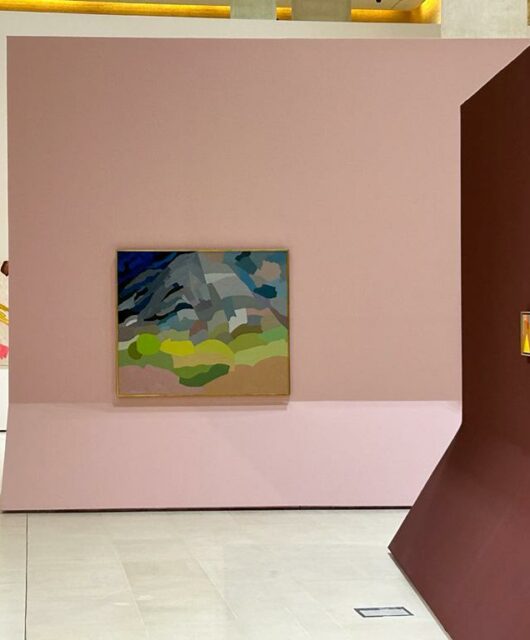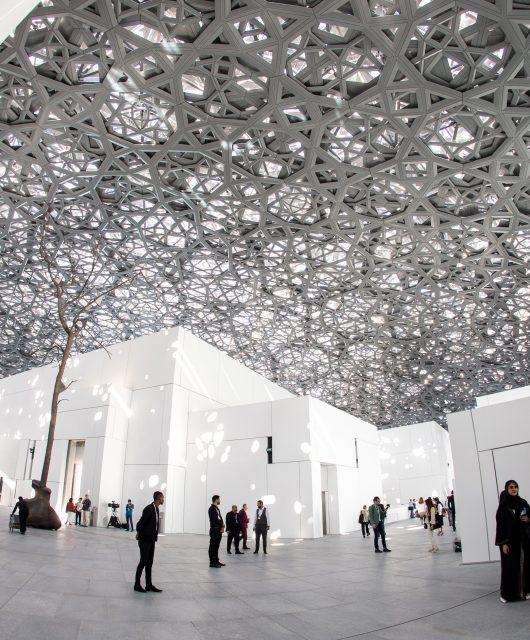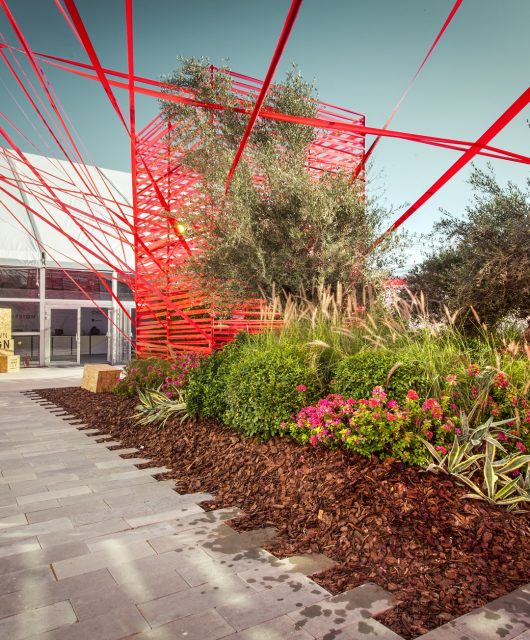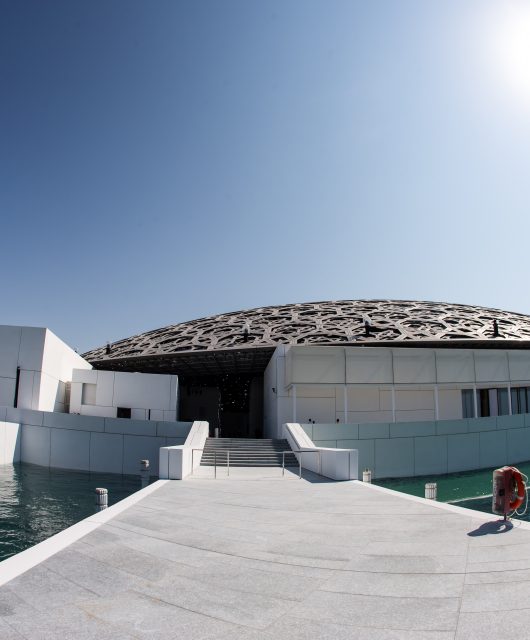Carpet Queen
From her showroom studio in Dubai’s d3, Swedish painter and designer Cecilia Setterdahl is redefining traditional carpet making. Melanie Mingas writes
From antique to heirloom, oriental to handwoven – no two rugs are created equal. But today, more rugs than ever are created from a desire to place audacious design at the heart of large spaces.
Graduating from statement walls to statement carpets over recent years, the modern home (workspace, restaurant, hotel) today uses style as a focal point, pushing the boundaries of why, how and where accent is used to bring meaning to a room; a zest-hued alcove, a mirrored fireplace, a unique rug.
 The trend is far from new although it has evolved rapidly over the last decade, thanks in part to the contributions of Vivienne Westwood, Calvin Klein and Ted Baker who, through somewhat experimental collections of statement carpets and rugs, brought new life to perhaps one of the most versatile furnishings in a room. Their respective visual identities, infused with the vintage stoicism of traditional rug design, introduced a much-needed wave of modernity to the art.
The trend is far from new although it has evolved rapidly over the last decade, thanks in part to the contributions of Vivienne Westwood, Calvin Klein and Ted Baker who, through somewhat experimental collections of statement carpets and rugs, brought new life to perhaps one of the most versatile furnishings in a room. Their respective visual identities, infused with the vintage stoicism of traditional rug design, introduced a much-needed wave of modernity to the art.
At Dubai’s d3, Swedish painter/designer and Dubai resident, Cecilia Setterdahl is on a mission to bring another dimension to the statement rug trend by creating pieces based on her bespoke, custom and one off canvas paintings composed of geometric shapes, coloured in striking hues.
Since 2013, Setterdahl has combined her own paintings with texture and interior trends to create a series of unique (and near-unique) rugs.Following a property purchase in Dubai in 2010, she re-located her business to the GCC in 2015, and opened a prime location at d3 in January 2016. “I have been a painter since my teenage years and my style developed over the years into graphic and bold colours,” Setterdahl says. “Much of my design thinking is how to contrast different colours and find the right balance. I have always worked with geometric lines; however, with each passing year, my colours have become bolder.”
Refracted through the tastes and inspirations of the client (and sometimes the client’s client) each work is adapted from canvas to the woven textures seen across her arresting portfolio of work, over a period of up to three months. On a standard run, 10 of each design will be hand-knotted in India for sale to clients around the world. For bespoke work, custom creations are strictly limited edition. For public spaces and hospitality clients, carpets are hand-tufted in order to replicate the same handknotted effect but with a quicker turnaround.
“The visual effect from a painting is different than from a carpet and designing in this way is not 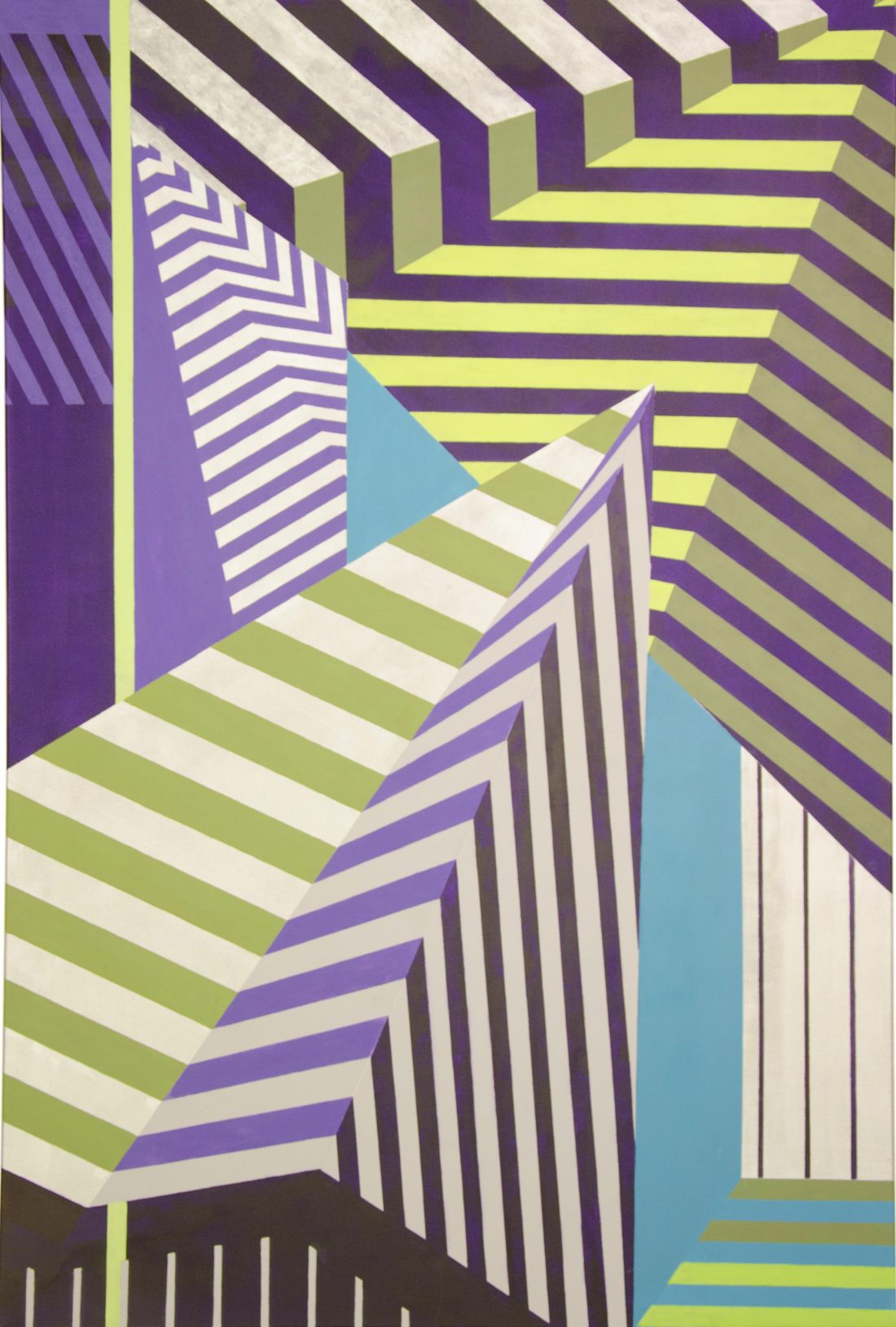 without its challenges,” she explains. “Paint colours have infinite variations, but colours for wool do not.” The first step is to create the full size templates, which act as the design instructions. Following this, the wool is dyed and the loom prepared. A carpet measuring 4sqm takes around two months to handknot, if working to 100 knots per square inch. Once the knotting is complete the carpet needs to be washed, cut and trimmed, with each thread cut back to a uniformed height, before the drying process begins under the hot Indian sun.
without its challenges,” she explains. “Paint colours have infinite variations, but colours for wool do not.” The first step is to create the full size templates, which act as the design instructions. Following this, the wool is dyed and the loom prepared. A carpet measuring 4sqm takes around two months to handknot, if working to 100 knots per square inch. Once the knotting is complete the carpet needs to be washed, cut and trimmed, with each thread cut back to a uniformed height, before the drying process begins under the hot Indian sun.
The creative process
The interior design community of the UAE – who commission Setterdahl to bring personalised touches to their client work – the painter, designer and artist is now at the helm of one of the region’s most exciting, and adaptable, interior trends. She says: “We operate from Dubai and we are targeting interior designers and interior architects in the UAE as one market, one that we can personally visit. Sometimes our customers call us and urgently need a design to match a client’s project. This is exciting as it usually results in one meeting to understand and then I make some designs on paper and one is chosen from the ideas I submit.
“Once the client has chosen the design, I then work to make it more complete, get the go ahead and then we arrange the carpet to be made from that design. Usually it is time pressed and that means follow up work.”
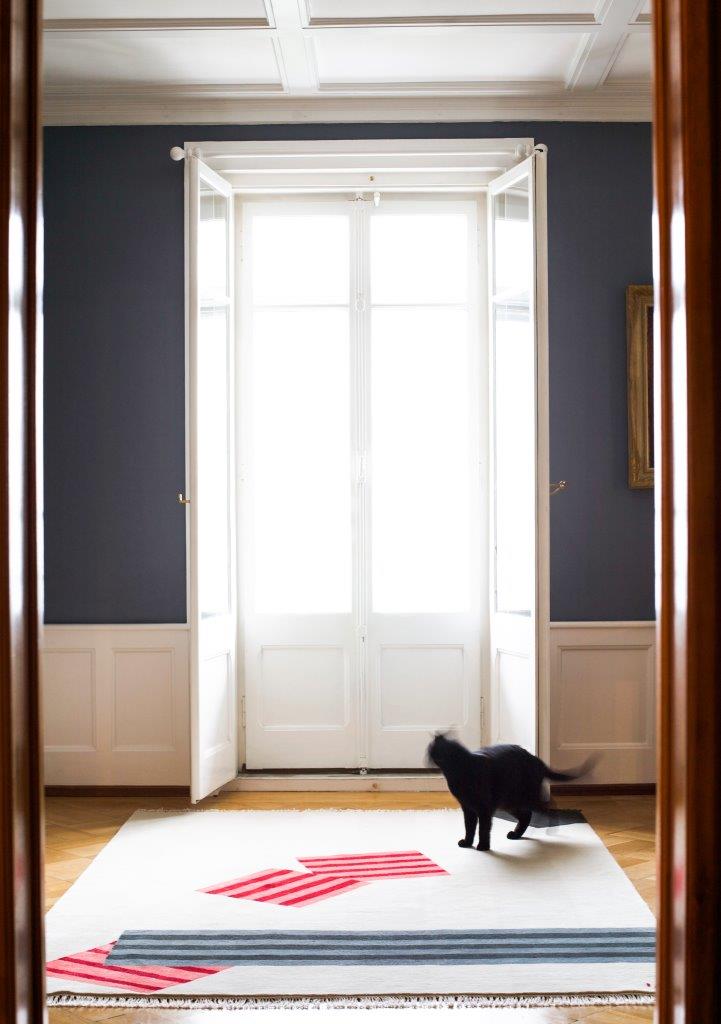 For each design, Setterdahl sketches anywhere between five and 10 ideas, varying the colour combinations to explore all possibilities. From the client’s shortlist, Setterdahl develops their chosen sketches, eventually using the paper drawing to brief the carpet maker. The entire process is undertaken by hand, without any assistance from CAD software or image manipulation programmes. Working predominantly with New Zealand wool, Setterdahl sketches according to the colours and shapes that inspire her, rather than allowing the limitations of loom technology to define her style or creative process. Her studio is part carpet showroom, part gallery and currently home over 30 original rug designs. The canvas is brought to life in India, where the majority of rugs for Carpets CC are hand-knotted. Diagonal designs – in addition to the infinite possibilities of colour and circular patterns – arethe most challenging elements, and dependent upon the skill of the person at the loom. From the heavy use of colour and circles in the work on display at her d3 studio, it’s easy to see Setterdahl is a women who enjoys a challenge.
For each design, Setterdahl sketches anywhere between five and 10 ideas, varying the colour combinations to explore all possibilities. From the client’s shortlist, Setterdahl develops their chosen sketches, eventually using the paper drawing to brief the carpet maker. The entire process is undertaken by hand, without any assistance from CAD software or image manipulation programmes. Working predominantly with New Zealand wool, Setterdahl sketches according to the colours and shapes that inspire her, rather than allowing the limitations of loom technology to define her style or creative process. Her studio is part carpet showroom, part gallery and currently home over 30 original rug designs. The canvas is brought to life in India, where the majority of rugs for Carpets CC are hand-knotted. Diagonal designs – in addition to the infinite possibilities of colour and circular patterns – arethe most challenging elements, and dependent upon the skill of the person at the loom. From the heavy use of colour and circles in the work on display at her d3 studio, it’s easy to see Setterdahl is a women who enjoys a challenge.

She continues: “Replicating the same colours I use in the original paintings is very difficult. The wool is dyed in batches and the colour has to be very even. If the shade changes ever so slightly it shows up as an unintended ‘line’ in a large colour fields. But we push the boundaries! Certain diagonals and round circles are difficult, but I believe my designs are very suitable for carpets!”
My style as an artist has developed a lot over my career. In the beginning I included natural elements along with geometric forms and later on my interest for geometric forms took over and gradually overpowered the other influences
Setterdahl’s first carpet was a truly international affair, if one that came about by chance. While attending a wedding in Mumbai in 2012, the bride’s family, who happened to be in the carpet business, invited their artistic guest to see her paintings transformed. Selecting two works from her home in Sweden, Setterdahl commissioned the design and embarked on a creative experiment that would evolve from an idea to an artistic business.
“The first two carpets turned out great and I learned a lot,” she recalls. “The first carpet is based on a painting called Meeting and is still one of my favourites! It is orange, pink and black with a translucent white stripe across the width and is in our home. “When you first try something that is new, you are naïve so you do not expect problems and we did not anticipate any,” she continues. Today, Setterdahl’s suppliers are selected personally for the quality and detail of their work. In addition to her partners in India, she has also worked with Nepalese manufacturers using Tibetan wool and through her association with the Fatima Bint Mohammed Bin Zayed Initiative (FBMI), developed a range of carpets hand-knotted in Afghanistan, where carpet weaving is mostly done by women.
FBMI was established to bring economic opportunity to Afghanistan’s large population of widows, who are the sole breadwinners for their families, and has so far employed 3,000 Afghan artisans since its inception – 70% of whom are women and 35% of which are widows.
Carpets are made from indigenous Afghan wool purchased from nomads that is then hand spun, with the dyes being vegetables based. The initiative also supports local Afghan farmers, who help source the highest-quality wool, and the export of the finished carpets generates income for the country.
“We are proud to be associated with FBMI. When we heard the story we decided to design three trial carpets for them right away. Supporting women in Kabul and their children, while doing our normal business, is great. Afghan wool is different from our main product – New Zealand wool – and we have worked to adapt my designs that works with Afghan wool and carpet tradition. We have just received one trial where the sides of the carpets are 1cm thick and in the middle is a purple Mohawk swath of Afghan wool, measuring 5 – 7cm high.”
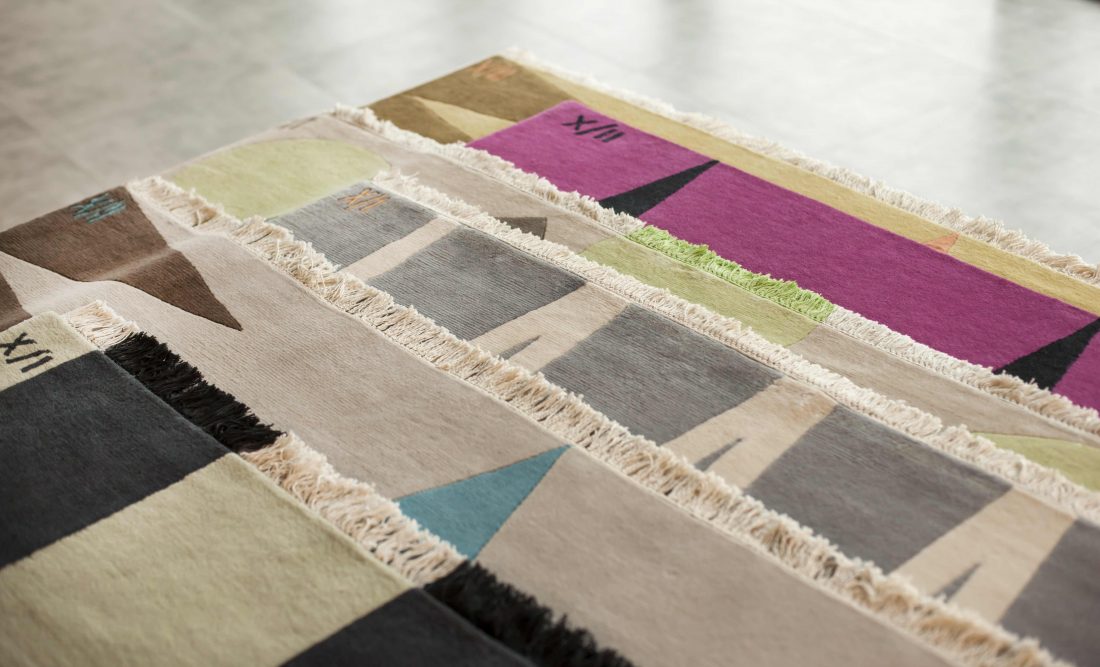 On trend
On trend
While current trends remain firmly fixed on classic, vintage and floral inspiration, Setterdahl flies in the face of the washed out pastels that are prevalent in both interior trends and fashion, through pallets with unapologetic presence.
Allowing her artistic expression to lead the way – rather than having the present flooring and
interior trends dictating her style – the resulting pieces are not for the faint hearted and while Carpets CC specialises in exactly what one would expect, Setterdahl doesn’t describe herself as a carpet designer. She says: “I chose from my paintings what would look good as a ‘carpet’. Flooring trends, well I hope that I am ahead of what is on the floors today. Carpets today are mostly quite generic. I would describe the style as funky elegant, statement pieces. I would love if everyone started with a carpet and then created the rest of the room from there.
Citing “everyday experiences” as her inspirations, Setterdahl sees geometric inspiration in everything: “a fold in a curtain, the angle of a roof, an interesting colour found in a dress.” While on the way to build a brand name in the GCC, Setterdahl is also looking to increase her footprint of international clients, visiting London earlier in the year to meet with British outlets. An agreement has been reached with HIRUGS, U.K. for a line of geometrical and colourful flat weave from India. “That market is very competitive and it means that we have to be very unique, which we believe we are after doing all our research, running all over London looking into shops. With manufacture in India and designing here in Dubai we feel we can reach any client worldwide who is thinking funky elegant.”
For Setterdahl, who operates in a cavern of the industry that appears to escape the same prescription of trends seen in fashion or furniture design, business is building quickly. Leveraging the networking opportunities afforded by d3, Carpets CC is taking full advantage of being in the right place at the right time, and footfall to her hybrid creative space is building every month
She concludes: “I started painting before most of the people at d3 were born! It is inspirational to say the least for us to be based here and we chose d3 as it has to be the easiest way to meet people who want to try something new and we expect that aspect to grow with more people and companies coming here.”
Cecilia Setterdahl studied at the Luleå University of Technology, Sweden, and various Art Schools in Sweden and Switzerland, before emigrating to Neuchatel, Switzerland 1988, where she lived for 28 years. She worked from the painting studio BV 5 with three other women from 1999 until her move to Dubai in 2015.

